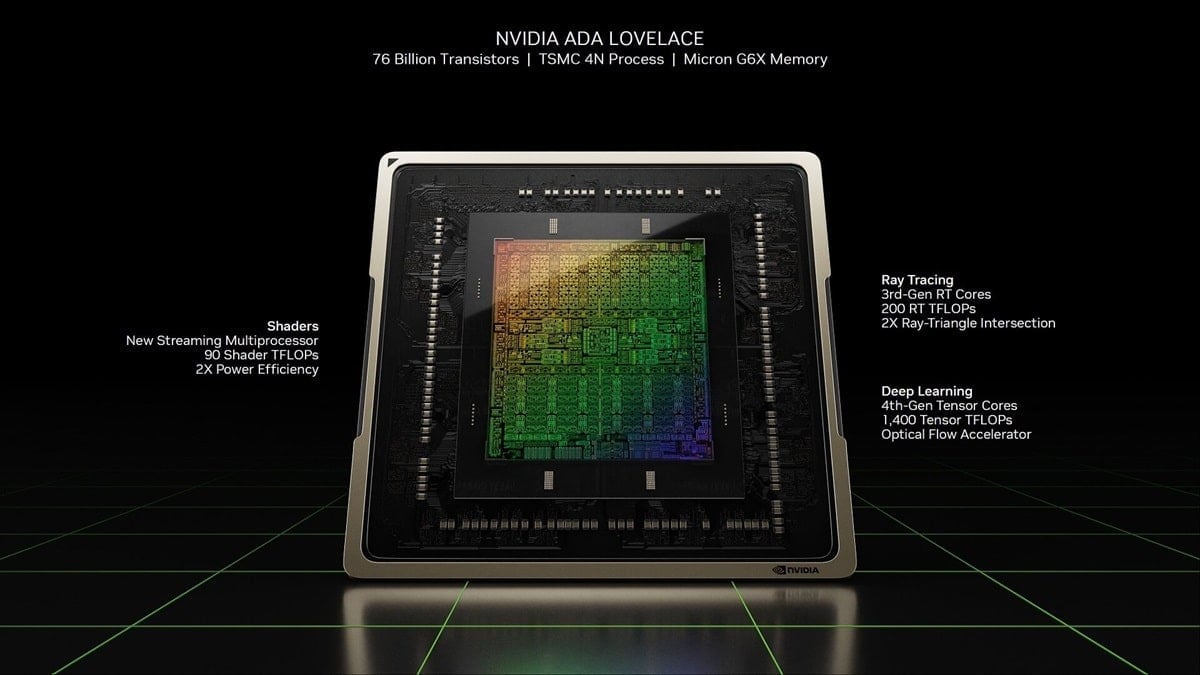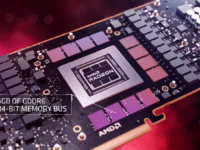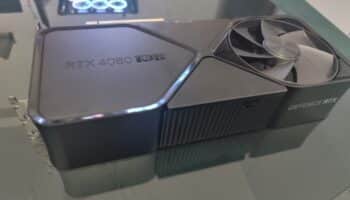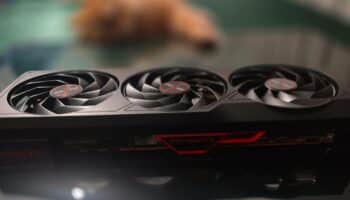The GeForce RTX 5090 will be NVIDIA’s next gaming flagship, doubling down on memory, cache, and cores. Multiple sources have shared their findings on the Blackwell top gun, which we’ll discuss in this post. RedGamingTech claims that the RTX 5090 will feature 204 SMs for a total of 26,112 cores. On the memory side, we’re looking at 32Gbps GDDR7 memory paired with a 384-bit bus. The L2 cache will be consolidated to 96MB as well. Plans of using a 512-bit bus seem to have been shelved.
According to @kopite7kimi, the next-gen Blackwell “GB202” gaming die will have a 12 (GPCs) x 8 (TPCs) configuration. This would result in a massive GPU featuring 12 GPCs (Graphics Processing Clusters), each with 8 TPCs (Texture Processing Clusters). A TPC comprises 2 SMs (Streaming Multi-Processors), each of which contains 128 FP32 cores.
The above numbers net a core count of 24,576 (192 SMs) for the fully enabled GB202 die. Like its predecessor, the GeForce RTX 5090 should contain a few disabled SMs to ensure proper yields. Optimistically, we can expect a core count of 24,046 or less.
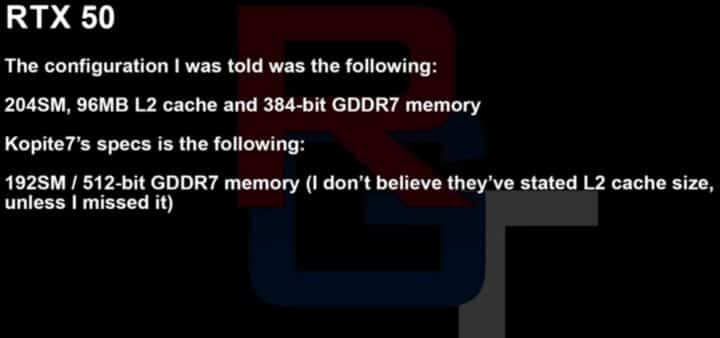
The GeForce RTX 5090 with 32Gbps GDDR7 memory and a 384-bit bus would produce an external memory bandwidth of 1,536 GB/s, up from 1,008 GB/s on the RTX 4090. A 50% increase in memory throughput backed by a ~60% gain in shader density would easily net generational uplifts of up to 2x or more. It’s still too early to finalize a number, but it’d be fair to say that the RTX 5090 should deliver the same kind of upgrade as its predecessor.
| Graphics Card Name | NVIDIA GeForce RTX 4090 | NVIDIA GeForce RTX 4080 | NVIDIA GeForce RTX 4070 Ti | NVIDIA GeForce RTX 4070 | NVIDIA GeForce RTX 4060 Ti | NVIDIA GeForce RTX 4060 |
|---|---|---|---|---|---|---|
| Die | AD102 | AD103 | AD104 | AD104 | AD106 | AD107 |
| FP32 Cores | 16384 | 9728 | 7680 | 5888 | 4352 | 3072 |
| TMUs/ROPs | 512/176 | 320/112 | 240/80 | 184/64 | 136/48 | TBD |
| Tensor/RT Cores | 512/128 | 304/76 | 240/60 | 184/46 | 136/34 | TBD |
| L2 Cache | 72 MB | 64 MB | 48 MB | 36 MB | 32 MB | 24 MB |
| Base Clock | 2230 MHz | 2210 MHz | 2310 MHz | 1920 MHz | 2310 MHz | 1830 MHz |
| Boost Clock | 2520 MHz | 2510 MHz | 2610 MHz | 2475 MHz | 2535 MHz | 2460 MHz |
| VRAM | 24 GB GDDR6X | 16 GB GDDR6X | 12 GB GDDR6X | 12 GB GDDR6X | 8-16 GB GDDR6 | 8 GB GDDR6 |
| Bus Width | 384-bit | 256-bit | 192-bit | 192-bit | 128-bit | 128-bit |
| Memory Clock | 21.0 Gbps | 23.0 Gbps | 21.0 Gbps | 21.0 Gbps | 18.0 Gbps | 17.0 Gbps |
| Bandwidth | 1008 GB/s | 736 GB/s | 504 GB/s | 504 GB/s | 288 GB/s (554 GB/s Effective) | 272 GB/s (453 GB/s Effective) |
| TBP | 450W | 320W | 285W | 200W | 160/165W | 115W |
| MSRP | $1599 | $1199 | $799 | $599 | $399-$499 | $299 |
| Launch | 12th Oct 2022 | 16th Nov 2022 | 5th Jan 2023 | 13th April 2023 | 24th May/ Jul 2023 | Jul 2023 |
An RTX 5080 featuring a bus width of 192-bit and 32Gbps GDDR7 memory would net bandwidth of 768GB/s, a small upgrade from the 717GB/s offered by the RTX 4080. Neither the RTX 4080 nor the 4080 Super utilize a 192-bit bus. With Ada, NVIDIA is using larger L2 cache buffers to improve on-die hit rates, and when they’re not being stingy with DRAM, it mostly works.
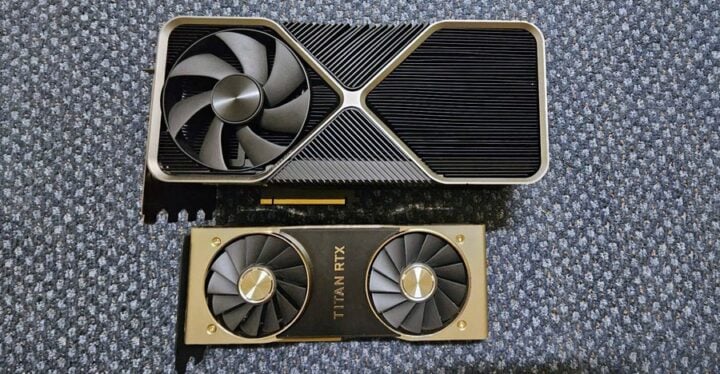
The GeForce RTX 5090 Founders Edition will allegedly use the same heatsink as the recently leaked RTX 4090 Ti. This massive thermal solution is four slots wide with four fans and a complex, side-mounted PCB. The final design will likely be toned down as there’s no need for such a large shroud.
We already know that the RTX 4090 runs well on cheap, aftermarket coolers. There’s no reason for the RTX 5090 to accommodate a similar-sized heatsink even though it’s expected to be fabbed on TSMC’s 3nm-class process technology.
Source: Kimi.
